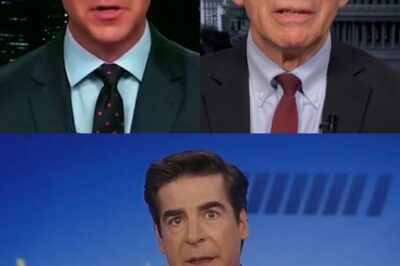The Real Reason Robbie Williams Was Fired from Take That
Take That was one of the biggest and most beloved British boy bands of the 1990s. From their meteoric rise to fame, heartbreaking breakup, and legendary comeback, the group has seen it all. However, one of the most talked-about moments in their history was Robbie Williams’ dramatic exit in 1995. What really happened behind the scenes? Why did Robbie leave at the peak of the band’s success? And how did Take That manage to move forward without him?
The Formation of Take That: A Boy Band Dream
The story of Take That began in 1989 when music manager Nigel Martin-Smith set out to create the ultimate British boy band, inspired by the success of New Kids on the Block. He wasn’t just looking for good looks—he wanted a group that could sing, dance, and capture the hearts of millions.
The first key member was Gary Barlow, a talented young singer-songwriter who had been performing in clubs since the age of 15. Recognizing his potential, Martin-Smith built the band around him. Soon, other members joined:
Howard Donald, a DJ and dancer, who shared a love of electronic music with Gary.
Jason Orange, a skilled breakdancer with natural stage presence.
Mark Owen, a fresh-faced bank worker with a boy-next-door charm.
Robbie Williams, a rebellious 16-year-old with charisma and an undeniable spark.
Initially calling themselves “Kick It,” the group quickly rebranded as Take That, polished their sound, and began their journey to stardom.
The Rise of Take That: Chart-Topping Success
Take That made their first TV appearance in 1990, performing original songs by Gary Barlow. Though their early singles didn’t make waves, their 1992 hit “It Only Takes a Minute” catapulted them to stardom, reaching No. 7 on the UK charts.
From there, the hits kept coming:
“A Million Love Songs”, “Could It Be Magic”, and “Relight My Fire” became fan favorites.
Their 1993 album Everything Changes produced four No. 1 singles, solidifying their dominance in the UK music scene.
In 1995, “Back for Good” became their biggest international hit, even breaking into the US Top 10.
Take That was at their peak, drawing comparisons to The Beatles. However, behind the scenes, cracks were beginning to show—particularly with Robbie Williams.
The Downfall: Robbie’s Struggles and Rebellion
While all members of Take That played a role in their success, Robbie Williams quickly became a standout star. His cheeky personality, boundless energy, and rebellious nature made him a fan favorite. However, those same qualities also put him at odds with the group’s strict management and creative direction.
By 1994, Robbie was struggling with personal demons, including addiction and mental health issues. He felt stifled within Take That, resenting the lack of artistic freedom. His partying lifestyle spiraled out of control, leading to moments of serious concern.
One major incident occurred the night before Take That’s MTV Europe Music Awards performance—Robbie reportedly nearly overdosed on drugs, putting both his life and the band’s reputation in jeopardy.
His wild behavior reached its peak in June 1995 when he was spotted partying with Oasis at Glastonbury Festival. This public defiance was the final straw for Take That.
Robbie’s Exit: Fired or Forced Out?
Shortly after the Glastonbury incident, the band confronted Robbie, giving him an ultimatum:
Either clean up his act and follow the band’s rules or leave immediately.
Robbie chose to walk away. Officially, it was said that he left “by mutual agreement,” but many fans believe he was pushed out.
Later, Robbie admitted he was deeply unhappy at the time:
“I felt isolated. I thought there was something wrong with me.”
After his departure, Take That continued as a four-member group, releasing one final album Nobody Else before disbanding in 1996. Their breakup devastated millions of fans worldwide.
Life After Take That: Robbie’s Solo Triumph
After leaving the group, Robbie Williams launched one of the most successful solo careers in British music history. His debut album Life thru a Lens (1997) initially struggled but later exploded in popularity thanks to the smash hit “Angels”.
He went on to dominate the charts with albums like:
I’ve Been Expecting You (1998)
Sing When You’re Winning (2000)
Escapology (2002)
Robbie’s reinvention as a solo artist proved that his talent extended far beyond Take That.
The Reunion: Take That’s Comeback and Robbie’s Return
Despite their bitter past, the members of Take That eventually reconciled. In 2005, the remaining four members reunited for a highly successful comeback tour.
In 2010, fans got the reunion they had been waiting for—Robbie Williams officially rejoined Take That for the album Progress, which became one of the fastest-selling albums in UK history. However, his return was short-lived, and he eventually left again to focus on his solo career.
A Legendary Feud Turned Friendship
Robbie Williams’ departure from Take That was one of the most dramatic exits in pop history, driven by creative differences, personal struggles, and a desire for artistic freedom. However, despite the bitter split, time healed old wounds, and the band members eventually rebuilt their friendship.
Today, both Robbie and Take That remain icons of British pop, proving that even the biggest feuds can have a happy ending.
News
MSNBC thought they could destroy Katie Phang’s career by canceling her weekend show, but Rachel Maddow was never going to let her friend fall into ruin. Under the protection of the person who MSNBC wouldn’t dare touch, Phang quickly attracted hundreds of thousands of viewers with her very first YouTube video after leaving the network. The MSNBC executives promptly extended her a new job offer—but Phang’s self-assured response left them humiliated.
You ever see someone get fired and then become 10x more powerful the minute they walk out the door? Yeah,…
SHOCK : ABC IN CRISIS: The View Yanked Off Air After Explosive Confrontation With Tyrus—Network Refuses to Explain Vanishing Act as Fans Demand to Know What Was Said When the Cameras Went Dark
Okay, so… what the actual hell just happened at The View? One second they’re doing their usual morning chaos—Joy snarking,…
THIS JUST HAPPENED: Karoline Leavitt calls Brittney Griner a ‘shit’ after discovering the truth about her gender. In a surprising and controversial move, the Women’s National Basketball Αssociation (WNBΑ) has announced that it will implement mandatory sex testing for all players starting next season. This decision comes amid discussions surrounding gender identity and inclusivity in women’s
Alright y’all, buckle up, because this isn’t just some spicy locker room drama. No no, this is the kind of…
Karoline Leavitt Drops One Line That Leaves The View in Total Shock — Even the Hosts Froze. It wasn’t loud. It wasn’t angry. It was cold, sharp, and straight to the point. One sentence — that’s all it took for Karoline to say what millions have been thinking for years.
Title: Karoline Leavitt vs. The View — And the One-Liner That Nuked Daytime TV Whew. Somebody hand Whoopi a glass…
FOX News Goes Full Savage: Jesse Watters Leads Ruthless Multi-Billion Dollar War to Annihilate CBS, ABC, and NBC in the Most Shocking Media Power Grab of the Decade—Legacy Networks Are Panicking, and the Future of TV May Never Be the Same
Alright y’all, buckle up because this ain’t your average cable news drama. FOX News didn’t just throw hands with the…
“IS BRITTNEY GRINER A MAN?!”—Viral Video Ignites FIRESTORM, Fans Lose It Over Bizarre Clip!
Brittney Griner, WNBA star and outspoken advocate, is no stranger to controversy — but her latest social media post has…
End of content
No more pages to load












